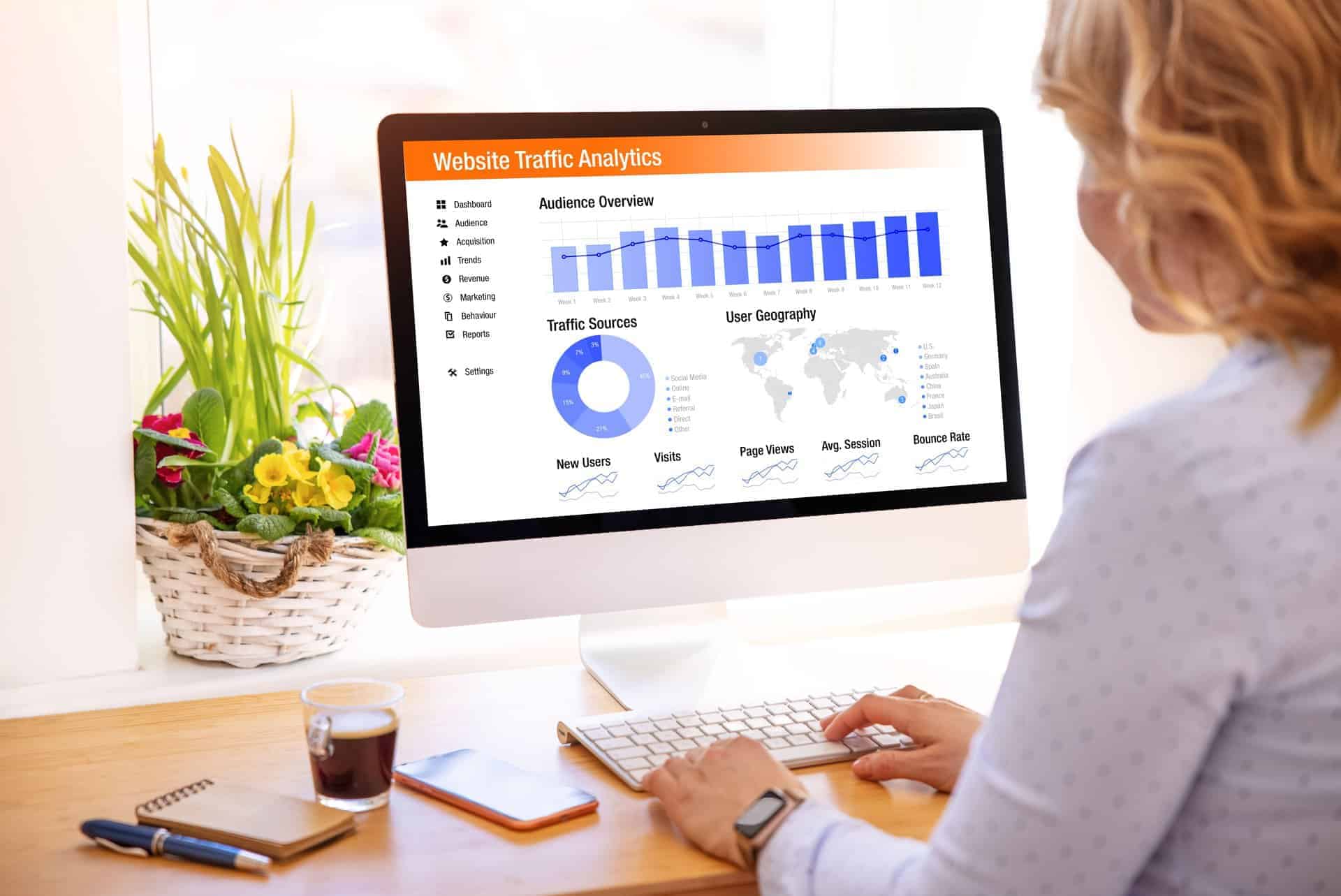How to Localize Your Website For Success in 2022
Updated April 2022
Most business owners know the importance of quality SEO practices to ensure your website doesn’t get lost in the busy world of the internet.
Still, many businesses fail to use these practices to connect with customers locally.
Local SEO is one of the most vital tools for any business, and small businesses have even more to gain by targeting this type of marketing.
We’ve put together a comprehensive Website Local SEO Checklist for 2022 to help you benefit from this tool.
SEO is designed to improve customer search results, and local searches have exploded with the popularity of smartphones.
It’s easy to assume your website is most useful for online sales. However, it can boost brick-and-mortar sales as well.
In fact, 17% of people in a survey said they confirm the existence of a business online before making their first visit, and 78% of mobile-based searches lead to an offline purchase.
While there are many offsite considerations to address when tackling the Local SEO puzzle, your company’s website is the foundation of your business’s online presence.
You’re losing customers if your website isn’t optimized for local visibility.
Try this Website Local SEO Checklist to localize your website and bring in more customers than ever in 2022.
10-Point Website Local SEO Checklist for 2022
1. Practice Proper Site Architecture
The first point in our Website Local SEO Checklist is ensuring you implement an intuitive site architecture.
When search engines work to find results for your search terms, they crawl over thousands of URLs in seconds.
Your web pages are up against some steep competition, and your URLs must fit various criteria to get in the top results.
- Readability (for both search engines and people)
- Keywords (including geographical modifier)
- Mobile friendly and app indexing
Additionally, having an intuitive site architecture and, by extension, URL structure based on categories, sub-categories, and so on will help your pages be more memorable and shareable.
2. Optimize Title Tags & Meta Descriptions
Changing the title tags for every page on your website most likely isn’t an idea you relish, but title tags are among the most important on-page elements for SEO.
Title tags must complete two important tasks at once. Your title tag indicates to search engines what the page’s title is and tells people what to expect when they click on the link.
Use these tips to optimize your title tags.
- Avoid using the same title for multiple pages.
- Keep it short. Google truncates tags over 60 characters.
- Include your location (city or area).
- Include keywords if you can add them without compromising readability.
Meta descriptions are located beneath the title tag on the search engine results page (SERP) and give you the opportunity to entice users with a longer description of the details on your web page.
To optimize your meta description, use your keywords (like your service and location) in a natural-sounding text that tempts users to click on your website instead of the competition.
3. Format Headings Properly
If you’ve been searching for ways to improve your SEO tactics, you’ve probably heard that headers no longer impact SEO rankings.
The truth is that headings don’t impact SEO rankings in the same way. Headings make your content scannable and easier for readers to digest.
Today’s SEO algorithms are all about user experience. So, your headings improve your SEO ranking because they improve your reader’s experience.
Try these techniques for headings that rise above the competition.
- Use proper formatting because search engines recognize Html codes.
- Use keywords, but focus on topics. The current SEO ranking focuses on readability and natural language. Keywords are still useful, but only if they fit naturally within the context. Consider using geographical keywords in your h1 and h2 headers and sparingly throughout the subtopics of your content.
- Use your header to ask a question. Then provide an answer in paragraph tags immediately below.
- Use your header to title a bullet list. Snippets like questions and lists naturally include user search terms for voice searches and quick searches, improving your ranking.
4. Optimize and Tag Images Properly
If you’re not optimizing your images, they most likely are labeled by a long file number assigned from your phone or computer.
It’s highly unlikely that your potential customers are searching for local businesses under random numbers, so it’s time to put your pictures to work with these local optimization techniques.
- Minimize your image file size. The quicker your site loads, the better. Optimizing pixel size for web publication maintains the high image quality without slowing your site down with huge file sizes.
- Rename your file before uploading. Your file name can include the service you provide and your city name.
- Ensure your images have geotagging. Geotagging automatically tells search engines where your photos were taken.
- Include keywords and your location in the alt text. Alt text was designed to describe images to people who can’t see them. While this might not affect all of your users, search bots automatically use the information provided in the alt text tags.
5. Create High-Value Localized Blog Content
 When it comes to SEO, content is king. High-value content provides users with the relevant information they’re searching for.
When it comes to SEO, content is king. High-value content provides users with the relevant information they’re searching for.
To optimize your content for local SEO, try these techniques.
- Submit guest posts to related local businesses.
- Use keywords relevant to your business and have a high search volume in your local area.
- Write useful content that applies to your local area.
- Create content that establishes you as an authority in your industry locally.
By creating these high-value pieces of content, you stand a greater chance of earning coveted local backlinks to your website, increasing your page rank and domain authority locally.
Those local links will earn you greater SEO rankings and improve your local visibility in a local online search.
6. Remove or Update Low-Value Content
Adding high-value content to your website is a good way to gain interest, but older, low-value content could still be weighing you down.
Most people will agree that fresh, new content is better than something published years ago. Search engines think so, too. But fresh isn’t all about being new.
Number six of our Website Local SEO Checklist is all about refreshing your evergreen content.
Remove broken links, optimize keywords, add updates, and insert images. This works like new content for search engines.
7. Remove Duplicate Content
If you’re providing high-value content for your blog, you probably know the dangers of plagiarism. Still, there is a vast amount of duplicate or at least very similar content on the internet.
You can inadvertently create duplicates of your own content by writing similar location (areas we serve) pages, product pages, and duplicate print-only pages.
While search engines don’t technically penalize websites for duplicate content, it can still lower your SEO ranking. Duplicate content dilutes the pool because only one page can rank first. Additionally, search engines see duplicate content as less trustworthy content.
So while we encourage creating location-specific pages (see #10), make sure each page is unique and not redundant.
8. Create Detailed Service Pages
Number 8 in our Website Local SEO Checklist is to create specific service pages.
A detailed page for each of your services provides multiple opportunities to use keywords/search terms that match what your potential customers are seeking.
Your service pages provide the information most likely to match up to local search terms. Lumping your services into a list on one page eliminates your chances of appearing in those searches.
Consider what percentage of consumers use search terms like “our services near me.” Zero would probably be an accurate guess. Yet, “Our Services” is the most likely title for a web page listing services a business performs.
9. Create Unique Location Pages
Local searches lead to sales, and the way you optimize your website is one thing that will put you ahead of the competition.
Search engines use your H1 tag, title, and meta description to assign rank. To improve local ranking, your keywords should include your location.
One page with multiple locations might allow you to optimize your meta description, but shorter tags wouldn’t have room. Individual location pages allow you to optimize each location for better ranking results.
As a bonus, individual location pages aren’t only easier for search engines to rank, but they improve user experience as well.
An individual page for your user’s location means an easier search and quick access to clear, concise information on the page.
Highlight the Uniqueness of Each Area
As we mentioned earlier, each location page should be unique. Try to craft the content to reflect the unique qualities and characteristics of your target location.
For example. Suppose you’re a contractor/builder trying to penetrate a particular neighborhood/market. In that case, the location page should reference the architectural designs that are the hallmark of this neighborhood and how your work honors those themes.
Mentioning your connections with the local construction board and your ability to procure the proper building permits is another way to address a pain point only a potential local client of this area would be concerned about.
Another good way to individualize a location page is to publish testimonials and positive reviews you received from clients in that area.
This will simultaneously reinforce the localization and uniqueness of the page to potential clients in the same neighborhood.
The bottom line is, that local neighbor affirmations go a long way when deciding to use a company or not.
10. Build Local Backlinks
Point ten in our Website Local SEO Checklist for 2022 is to ensure you have and build a local backlink profile.
Make sure you submit your location data – Name, Address, Phone number, and Website (NAP+W) to all the relevant local business directories that allow a backlink to your website. This will create an immediate start of a localized backlink profile.
However, aside from these directories and chambers of commerce, look for other unique local link-building opportunities that will distinguish you from your competitors.
Leverage Your Connections
Join local business networking groups and associations. They typically have high-authority websites that feature and link to member businesses’ websites. This gives you instant local credibility.
If you do business with other ‘dovetail’ local companies that service the same client base as you do, use it as an opportunity to exchange backlinks on a dedicated page on your respective websites to build each other’s backlink profiles.
Not only will this build your local backlink profile it will also give you local credibility.
Other link-building opportunities include sponsorships to local charities, organizations, and events.
By associating with other relevant local businesses and entities, you demonstrate to the search engines and potential local clients that you’re an important local entity that they should be aware of.
We Can Help You Localize Your Website
Get in touch today to learn more about how implementing this Website Local SEO Checklist and other tactics can lead to increased visibility and traffic for your small business.
LocalBizGuru is a full-service digital marketing agency prepared to help you drive traffic to both your website and brick-and-mortar location.



